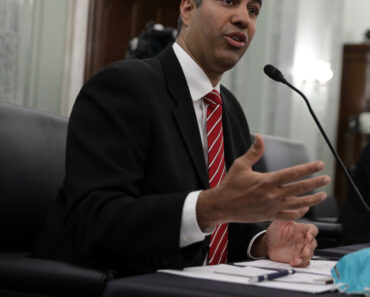This post was originally published on this site
https://fortune.com/img-assets/wp-content/uploads/2024/04/GettyImages-1430392954.jpg?w=2048
It’s that time of the year again. College students are seeking summer employment. Yet, research and my experience as a parent reveal that access to paid internships is not equally available to every student.
Despite overwhelming evidence of the value of a paid internship and the desire of students to secure the coveted spots, significant and troubling gaps persist in students’ access across most industries, according to a recent study from Strada Research.
While 70% of first-year students expect to intern, less than half of seniors reported having an internship experience, the study found. First-generation, Black, Latino, and female students are all far less likely to engage in paid internships.
Internships don’t always benefit those who need them the most
Internships, by design, are meant to give students and recent graduates a lasting leg up as they begin their careers. However, the internship divide means the students who have access to these important opportunities are typically those who already have resources and connections.
Paid internships are immensely valuable. Students who complete a paid internship during their undergraduate education earn $3,000 more than their non-internship peers one year after graduation. Two decades into their careers, graduates who participated in work-based learning, such as internships or apprenticeships, are far more likely to be satisfied with their careers, report higher annual income, and believe the investment they made in their education was worth it.
As it turns out, paid internships rarely go to students who would benefit from them the most. Many prestigious and lucrative internships, such as being a Congressional Intern, are not only competitive but require relocating to an expensive city for a short duration. Many students attending colleges where off-campus housing is the predominant option after their first year are already saddled with a 12-month lease near their institution.
Taking on an additional payment in an expensive city, even if they can find an affordable option, would wipe out all the savings they are expected to accumulate toward their tuition under our financial aid formulas. This housing and temporary relocation cost is an insurmountable barrier for students without a parent or caregiver who is able to subsidize the necessary career-building step of an internship. It’s time for employers to reimagine how they support these students in gaining meaningful work-based learning opportunities that lead to high-paying, rewarding careers.
Making work work for students
There are a variety of barriers in addition to housing costs that prevent first-generation students and other learners from disadvantaged backgrounds from participating in high-quality internships.
For many students, it’s a matter of competing priorities. Research from Strada shows that while first-generation students are less likely to participate in internships, they are much more likely to work 20 hours per week. The challenge is to make these year-round employment opportunities for college students as valuable in building skills and gaining relevant experience as the traditional summer internship.
There are innovative models demonstrating how this can work. Many universities employ thousands of students every year. Many of these students have campus jobs directly related to their field of study. Critically, some universities also work to identify important and in-demand durable skills and then incorporate skills development into student employment experiences so learners are gaining far more than a paycheck.
Of course, not all institutions have the resources to employ thousands of students themselves. They can, however, partner with companies, nonprofits, and other organizations to help provide high-quality and relevant work experiences. It’s important that employers collaborate with colleges and universities to ensure that the roles offered to students are similarly robust to paid internships. Every work experience should help students not only pay their rent and buy groceries but also build their resumes, generate networking opportunities, and develop durable, career-relevant skills.
Work designed for students should also be flexible, providing them with the time and space they need to meet their academic obligations and participate in meaningful extracurricular activities.
Whether it’s an internship, short-term project, or full-time job, employers can benefit from the innovative energy that students will bring to their workplace, while at the same time contributing to the early career development of the future workforce.
Every student needs an opportunity through work to build the skills and experience required to find success after graduation. Employers–and their partners in higher education–can work together to ensure they build the innovative models that best serve students, higher education, and employers.
Jane Swift is the president of Education at Work and a former governor of the Commonwealth of Massachusetts.
More must-read commentary published by Fortune:
- Dow CEO: My company is a major plastic producer. We must end plastic pollution
- We analyzed 46 years of consumer sentiment data–and found that today’s ‘vibecession’ is just men starting to feel as bad about the economy as women historically have
- 90% of homebuyers have historically opted to work with a real estate agent or broker. Here’s why that’s unlikely to change, according to the National Association of Realtors
- Intel CEO: ‘Our goal is to have at least 50% of the world’s advanced semiconductors produced in the U.S. and Europe by the end of the decade’
The opinions expressed in Fortune.com commentary pieces are solely the views of their authors and do not necessarily reflect the opinions and beliefs of Fortune.




